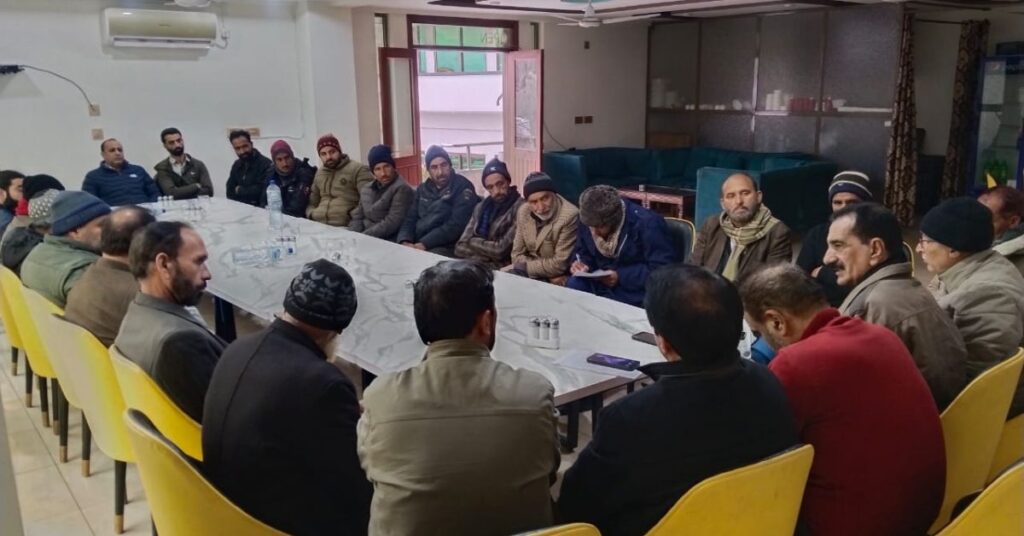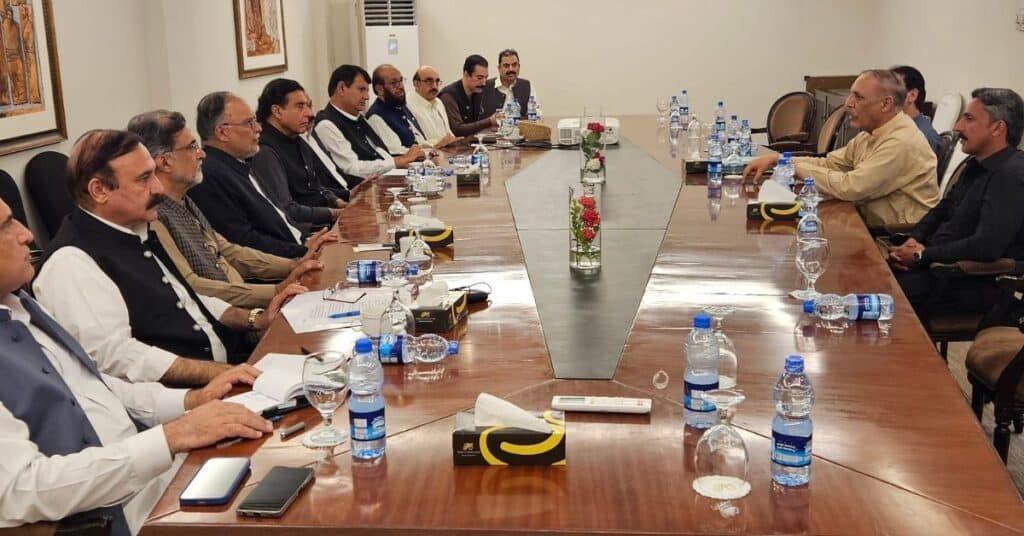By: Zulfiqar Ali (Kashmir Investigation Team)
MUZAFFARABAD (Kashmir English): The oversized administrative structure of the Azad Jammu and Kashmir (AJK) government, in comparison to the much bigger Punjab government, has raised serious questions of accountability.
Despite having a significantly smaller population, AJK’s government appears to be larger in terms of the number of ministers, advisors, and special assistants.
Punjab, with a population of around 130 million, has a Chief Minister, 17 ministers, and only two special assistants, whereas AJK, with a population of 2.7 million, has a Prime Minister, 32 ministers, two advisors, and two special assistants.
Azad Kashmir is a small territory with a total population of just 2.7 million — that is, only two percent of the population of Punjab, and less than a district like Rawalpindi, but the size of the government here is surprising.
There are a total of 10 divisions in Punjab, and a commissioner is posted in each division. There are 41 districts, and each district has a Deputy Commissioner.
In contrast, Azad Kashmir has 3 divisions, 10 districts, 10 Deputy Commissioners, and 3 Commissioners. The question is, why such a large and expensive administrative structure for a small population? Under what logic, what need, and what public interest is it established?
The most surprising fact is that the total area of Azad Kashmir is a mere 13,000 square kilometers, which is only six percent of the total area of the former state of Jammu and Kashmir.
Despite this, the constitution of Azad Kashmir claims that this government is representative of the entire state of Jammu and Kashmir — that is, Gilgit-Baltistan and Indian-administered Jammu and Kashmir are also included in this jurisdiction, although Azad Kashmir has no jurisdiction in these areas, nor has the people there ever recognized it as their representative government.
The fact is that most citizens of Gilgit-Baltistan and occupied Kashmir may not even be aware of this constitutional claim. This claim neither corresponds to the ground reality nor does it meet any moral or political justification.
Azad Kashmir also has this strange administrative tradition that the offices and residences of the Prime Minister and the President are located in Muzaffarabad and Islamabad. That is, not one but two offices and two protocols. This dual presence not only puts an additional burden on public resources, but this style of governance has been adopted in a region whose own economy is also on its knees.
Now, just look at the budget figures. In the financial year 2025–26, Rs 1.46 billion has been allocated for the Chief Minister’s office in Punjab, Rs 1.5 billion for the Governor’s House, and a total of Rs 1 billion for all the ministers’ offices.
In comparison, in Azad Kashmir, the budget for the Prime Minister’s Secretariat is Rs 600 million, the President’s Secretariat is Rs 390 million, and the total budget for the offices of ministers, advisors, and assistants is Rs 760 million.
In the last fiscal year 2024–25, Rs 230 million was spent on the Chief Minister’s office in Punjab, Rs 160 million on the Governor’s House, and Rs 350 million on the offices of ministers. While in Azad Kashmir, Rs 310 million was spent on the Prime Minister’s Secretariat, Rs 370 million on the President’s Secretariat, and about Rs 750 million on the offices of ministers and advisors.
That is, on the one hand, limited spending on a population of 130 million, on the other hand, political lavish spending of crores of rupees on a population of 2.7 million.
The total local income of Azad Kashmir is only Rs 112 billion, most of which is obtained from taxes. This region came into existence 77 years ago, but to date, no strong economy has been built here, no industrial infrastructure has come into existence, no private sector has flourished, and no new employment opportunities have been created.
Even today, the system here stands on only three pillars: federal aid, government jobs, and local taxes.
There are 42 departments in Punjab, and a secretary is posted for each department.
Azad Kashmir also has more than 30 departments, and 31 secretaries are posted for them, although neither the population, nor the financial resources, nor the administrative necessity requires it. The purpose of this entire government structure seems to be political division and distribution of positions rather than public service.
The government structure in Azad Kashmir is structured as if it were an independent state, which is financially stable and administratively self-sufficient. But the reality is that neither the size, nor the economy, nor the resources, nor any political or financial justification here allows for this cumbersome setup.
This is a show-off style of governance, where the priority is not public service, but the display of power, protocol, and the distribution of privileges.
This is not governance at all, but a formal system based on corruption, nepotism, and lavish spending — a system that turns public taxes and federal aid into the luxuries of the political elite.
A region that cannot even meet its expenses with its own income is spending lavishly on expensive luxury cars, unnecessary protocols, lavish allowances, and expensive government offices.
On the other hand, the common citizen is troubled by the increasing inflation, unemployment, power load shedding, poor health facilities, and dilapidated roads.
This is not just mismanagement, but a continuous, conscious, and systematic exploitation of public resources — a process that has been going on for years, without any hindrance, without any question or accountability.
Azad Kashmir today is not just a failed administrative model, but has become a personal fiefdom of corruption, incompetence, and a political elite — an elite that builds its palaces of comfort on the deprivations of the people.




